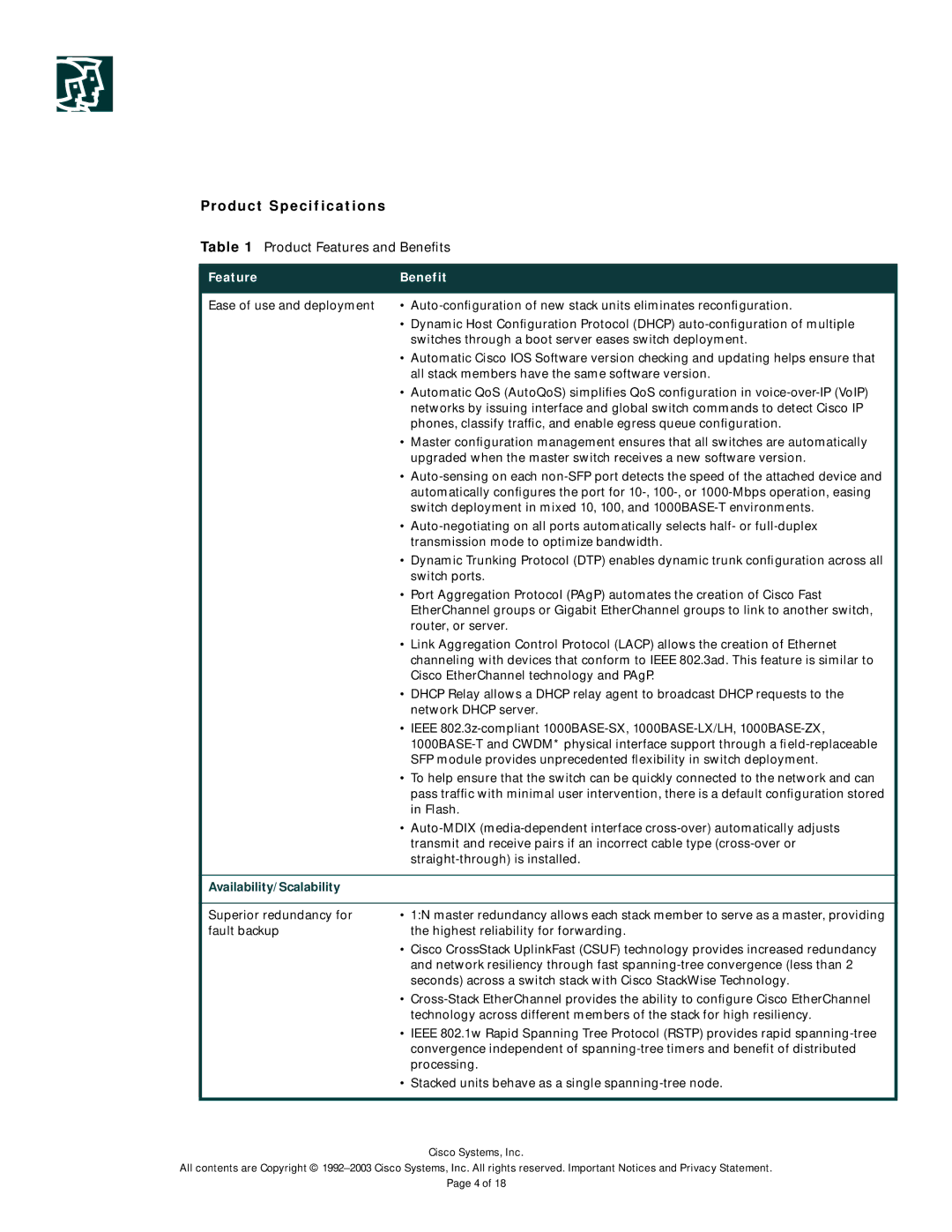
Product Specifications
Table 1 Product Features and Benefits
Feature | Benefit |
|
|
Ease of use and deployment | • |
| • Dynamic Host Configuration Protocol (DHCP) |
| switches through a boot server eases switch deployment. |
| • Automatic Cisco IOS Software version checking and updating helps ensure that |
| all stack members have the same software version. |
| • Automatic QoS (AutoQoS) simplifies QoS configuration in |
| networks by issuing interface and global switch commands to detect Cisco IP |
| phones, classify traffic, and enable egress queue configuration. |
| • Master configuration management ensures that all switches are automatically |
| upgraded when the master switch receives a new software version. |
| • |
| automatically configures the port for |
| switch deployment in mixed 10, 100, and |
| • |
| transmission mode to optimize bandwidth. |
| • Dynamic Trunking Protocol (DTP) enables dynamic trunk configuration across all |
| switch ports. |
| • Port Aggregation Protocol (PAgP) automates the creation of Cisco Fast |
| EtherChannel groups or Gigabit EtherChannel groups to link to another switch, |
| router, or server. |
| • Link Aggregation Control Protocol (LACP) allows the creation of Ethernet |
| channeling with devices that conform to IEEE 802.3ad. This feature is similar to |
| Cisco EtherChannel technology and PAgP. |
| • DHCP Relay allows a DHCP relay agent to broadcast DHCP requests to the |
| network DHCP server. |
| • IEEE |
| |
| SFP module provides unprecedented flexibility in switch deployment. |
| • To help ensure that the switch can be quickly connected to the network and can |
| pass traffic with minimal user intervention, there is a default configuration stored |
| in Flash. |
| • |
| transmit and receive pairs if an incorrect cable type |
| |
|
|
Availability/Scalability |
|
|
|
Superior redundancy for | • 1:N master redundancy allows each stack member to serve as a master, providing |
fault backup | the highest reliability for forwarding. |
| • Cisco CrossStack UplinkFast (CSUF) technology provides increased redundancy |
| and network resiliency through fast |
| seconds) across a switch stack with Cisco StackWise Technology. |
| • |
| technology across different members of the stack for high resiliency. |
| • IEEE 802.1w Rapid Spanning Tree Protocol (RSTP) provides rapid |
| convergence independent of |
| processing. |
| • Stacked units behave as a single |
|
|
Cisco Systems, Inc.
All contents are Copyright ©
Page 4 of 18
